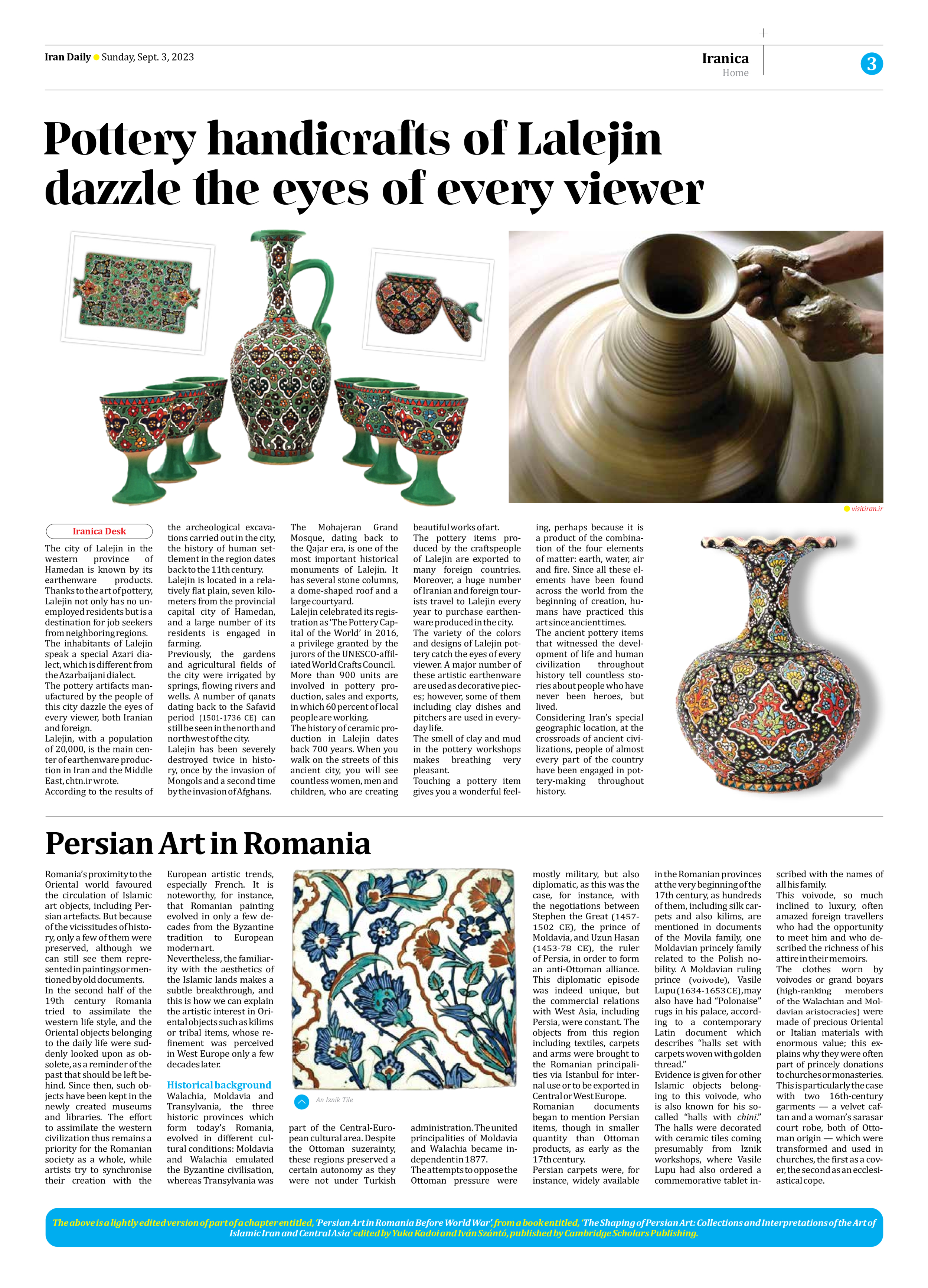
Persian Art in Romania
Romania’s proximity to the Oriental world favoured the circulation of Islamic art objects, including Persian artefacts. But because of the vicissitudes of history, only a few of them were preserved, although we can still see them represented in paintings or mentioned by old documents.
In the second half of the 19th century Romania tried to assimilate the western life style, and the Oriental objects belonging to the daily life were suddenly looked upon as obsolete, as a reminder of the past that should be left behind. Since then, such objects have been kept in the newly created museums and libraries. The effort to assimilate the western civilization thus remains a priority for the Romanian society as a whole, while artists try to synchronise their creation with the European artistic trends, especially French. It is noteworthy, for instance, that Romanian painting evolved in only a few decades from the Byzantine tradition to European modern art.
Nevertheless, the familiarity with the aesthetics of the Islamic lands makes a subtle breakthrough, and this is how we can explain the artistic interest in Oriental objects such as kilims or tribal items, whose refinement was perceived in West Europe only a few decades later.
Historical background
Walachia, Moldavia and Transylvania, the three historic provinces which form today’s Romania, evolved in different cultural conditions: Moldavia and Walachia emulated the Byzantine civilisation, whereas Transylvania was part of the Central-European cultural area. Despite the Ottoman suzerainty, these regions preserved a certain autonomy as they were not under Turkish administration. The united principalities of Moldavia and Walachia became independent in 1877.
The attempts to oppose the Ottoman pressure were mostly military, but also diplomatic, as this was the case, for instance, with the negotiations between Stephen the Great (1457-1502 CE), the prince of Moldavia, and Uzun Hasan (1453-78 CE), the ruler of Persia, in order to form an anti-Ottoman alliance. This diplomatic episode was indeed unique, but the commercial relations with West Asia, including Persia, were constant. The objects from this region including textiles, carpets and arms were brought to the Romanian principalities via Istanbul for internal use or to be exported in Central or West Europe.
Romanian documents began to mention Persian items, though in smaller quantity than Ottoman products, as early as the 17th century.
Persian carpets were, for instance, widely available in the Romanian provinces at the very beginning of the 17th century, as hundreds of them, including silk carpets and also kilims, are mentioned in documents of the Movila family, one Moldavian princely family related to the Polish nobility. A Moldavian ruling prince (voivode), Vasile Lupu (1634-1653 CE), may also have had “Polonaise” rugs in his palace, according to a contemporary Latin document which describes “halls set with carpets woven with golden thread.”
Evidence is given for other Islamic objects belonging to this voivode, who is also known for his so-called “halls with chini.” The halls were decorated with ceramic tiles coming presumably from Iznik workshops, where Vasile Lupu had also ordered a commemorative tablet inscribed with the names of all his family.
This voivode, so much inclined to luxury, often amazed foreign travellers who had the opportunity to meet him and who described the richness of his attire in their memoirs.
The clothes worn by voivodes or grand boyars (high-ranking members of the Walachian and Moldavian aristocracies) were made of precious Oriental or Italian materials with enormous value; this explains why they were often part of princely donations to churches or monasteries.
This is particularly the case with two 16th-century garments — a velvet caftan and a woman’s sarasar court robe, both of Ottoman origin — which were transformed and used in churches, the first as a cover, the second as an ecclesiastical cope.
The above is a lightly edited version of part of a chapter entitled, ‘Persian Art in Romania Before World War’, from a book entitled, ‘The Shaping of Persian Art: Collections and Interpretations of the Art of Islamic Iran and Central Asia’ edited by Yuka Kadoi and Iván Szántó, published by Cambridge Scholars Publishing.







